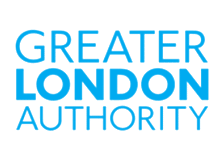This dataset includes the locations and species information for over 1,100,000 of London's public realm trees. It also includes additional information such as size and age for some of these trees. These are predominantly street trees and trees in parks and open spaces, but the dataset also includes some trees found in school grounds and on publicly maintained housing land.
The data does not represent the entirety of the capital's urban forest - the London iTree report estimated that there are over eight million trees in London, which includes trees in woodlands, parks, streets, private gardens and more. The data includes tree inventory data from 30 of London's 32 boroughs, the City of London, Transport for London, the Royal Parks, the London Legacy Development Corporation (which manages Queen Elizabeth Olympic Park) and Quintain (which manages Wembley Park).
As recognised in the London Urban Forest Plan (LUFP), collating data about London's urban forest is challenging due to the number of landowners and managers involved, as well as the limited resources available. Both the original LUFP and the associated 2025 update committed to undertaking regular updates to this map, and also, over time, to collating a London-wide inventory of publicly owned and managed trees, in line with emerging national standards.
The data is used on the London Public Realm Tree Map.
Notes on the data:
- This map was first published in 2016, based on data collected in 2014-15. A first update was issued in 2021, based on data collected in 2019-20. The latest update was released in May 2025, based on data collected in 2024-25. Where boroughs did not provide updated data in 2024-25, the 2019-20 data has been retained (e.g. Bromley). The data supplied for this map is a direct extract from London’s public realm tree managers’ individual tree inventories at that time. Trees may have been surveyed some time before it came to be shared for this map, therefore some records may be several years old.
- The map includes data from 30 of the London boroughs, the City of London and Transport for London (TfL), the Royal Parks, the London Legacy Development Corporation (which manages Queen Elizabeth Olympic Park) and Quintain (which manages Wembley Park).
- Data has not been received to date from three boroughs. We aim to add any additional data received to the Datastore and online map.
- Some large gaps on the map are due to large green spaces such as woodlands, reservoirs, or airports, as well as those boroughs where data is missing.
- The data received varies significantly by borough. Some boroughs have only included trees on highways, whilst others have included trees on housing land, in schools or in parks. In some cases trees were recorded only when work was carried out.
- There is not a consistent or agreed format for collecting or recording tree data across London. This presents a challenge in collating data across multiple boroughs. Many boroughs collect a range of information about their trees (e.g. age, height). However this varied by borough in terms of the information collected and categorisations used so we were not able to standardise this information.
- Tree species data has been standardised to allow for simplified common name to be used as filters display on the tree webmap (e. g. “Pear”). These are the common names for the 24 types of tree appearing most frequently in the data (which encompass 90% of all trees), with the remaining trees categorised as “Other”. We have also left the species name as provided by the borough in the data.
- The ‘tree ID’ number has been added to the data to help map it. This number is not linked to borough’s tree management systems.
Warning: Large file size may result in a long download time



